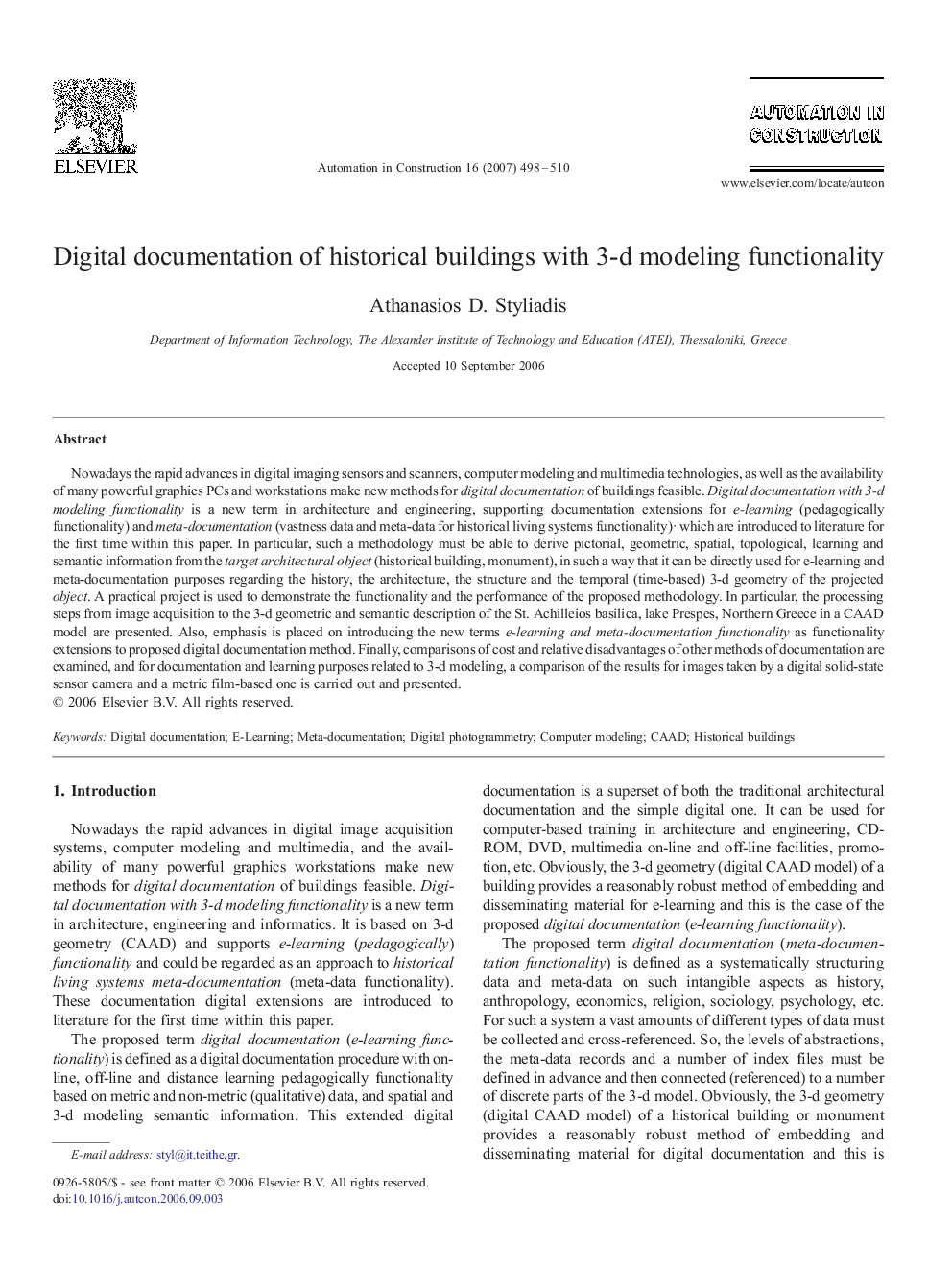| Article ID | Journal | Published Year | Pages | File Type |
|---|---|---|---|---|
| 247595 | Automation in Construction | 2007 | 13 Pages |
Nowadays the rapid advances in digital imaging sensors and scanners, computer modeling and multimedia technologies, as well as the availability of many powerful graphics PCs and workstations make new methods for digital documentation of buildings feasible. Digital documentation with 3-d modeling functionality is a new term in architecture and engineering, supporting documentation extensions for e-learning (pedagogically functionality) and meta-documentation (vastness data and meta-data for historical living systems functionality)· which are introduced to literature for the first time within this paper. In particular, such a methodology must be able to derive pictorial, geometric, spatial, topological, learning and semantic information from the target architectural object (historical building, monument), in such a way that it can be directly used for e-learning and meta-documentation purposes regarding the history, the architecture, the structure and the temporal (time-based) 3-d geometry of the projected object. A practical project is used to demonstrate the functionality and the performance of the proposed methodology. In particular, the processing steps from image acquisition to the 3-d geometric and semantic description of the St. Achilleios basilica, lake Prespes, Northern Greece in a CAAD model are presented. Also, emphasis is placed on introducing the new terms e-learning and meta-documentation functionality as functionality extensions to proposed digital documentation method. Finally, comparisons of cost and relative disadvantages of other methods of documentation are examined, and for documentation and learning purposes related to 3-d modeling, a comparison of the results for images taken by a digital solid-state sensor camera and a metric film-based one is carried out and presented.
